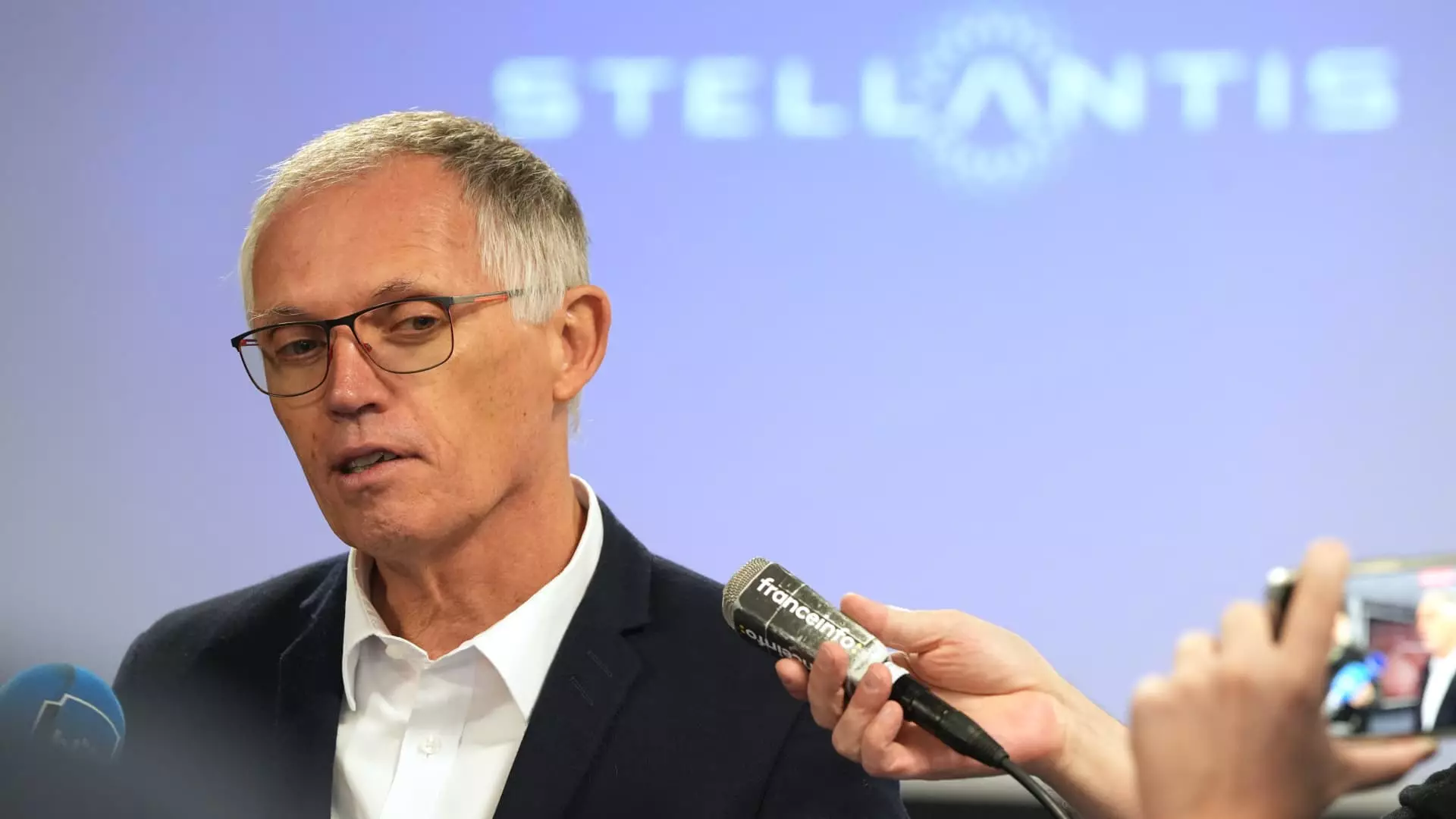In a surprising turn of events, Carlos Tavares has stepped down as CEO of Stellantis, the multinational automotive manufacturer formed from the merger of Fiat Chrysler Automobiles and PSA Groupe. Announced on a Sunday, his resignation marks a significant shift in the company’s leadership, revealing cracks in the relationship between Tavares and the board of directors. Stellantis, currently the fourth-largest carmaker globally, stated that the resignation is effective immediately, raising questions about the company’s future direction and strategy.
Tavares’ sudden exit comes just months after Stellantis indicated he would retire at the end of his contract in early 2026. This unexpected decision to part ways now hints at deeper issues within the management structure, as the company navigates a challenging automotive market. Stellantis stated that the search for Tavares’ successor is already underway and expected to conclude by the end of the first half of the following year, with John Elkann stepping in as interim chair.
The official statement from Stellantis sheds light on the “different views” that led to Tavares’ resignation. Henri de Castries, Stellantis’ senior independent director, emphasized the historically harmonious alignment between the CEO, shareholders, and the board. However, the recent divergence in vision has catalyzed this significant leadership change. It raises concerns about the internal dynamics of the company and how aligned their visions are regarding growth, innovation, and market strategy.
Tavares was heralded for his role in orchestrating the merger and his expertise in navigating the complexities of the automotive industry. Yet, under his watch, Stellantis has encountered significant operational hurdles, particularly in the U.S. market, a crucial revenue driver. The company’s declining sales—approximately a 20% drop in year-over-year global vehicle sales during the third quarter—suggests that Tavares’ strategies may have missed the mark amid increasing competition and consumer demand for innovative solutions.
This year has been particularly challenging for Stellantis, which recently revised its annual guidance downward, hinting at financial difficulties ahead. The company reported a dismal 27% decrease in third-quarter net revenues, reflecting a broader trend of underperformance that has alarmed investors. Tavares’ aggressive cost-cutting measures—the hallmark of his leadership—were presumably implemented to bolster profitability, but the response from the market has been anything but favorable. Shares of Stellantis traded on the U.S. market have plummeted by around 43% since the beginning of 2024.
Many industry analysts and insiders have pointed to Tavares’ approach to cost management as a potential factor contributing to the company’s misfortunes. His self-reported €8.4 billion ($9 billion) in budget reductions comes with substantial repercussions, such as workforce trimming and operational restructuring. Though intended to create a leaner, more efficient organization, these measures have been portrayed by some as excessively harsh and detrimental to employee morale.
The consolidation of Stellantis’ operations—with a pivot toward reduced headcounts in favor of lower-cost locations such as Brazil and Mexico—has bred discontent among employees and unions alike. The United Auto Workers (UAW) union has publicly voiced its grievances, demanding Tavares’ removal amidst ongoing layoffs and production cuts that have threatened jobs in the U.S. and Italy. The upheaval within Stellantis raises critical questions about how future leadership will prioritize employee relations, especially as automakers face increasing pressure to balance cost savings with workforce stability.
Moreover, Stellantis’ franchise network, comprised of its dealerships, has also openly criticized Tavares’ leadership amid challenges like bloated inventories and inadequate financial support from the automaker. As the dust settles from this recent upheaval, the company’s new leadership will need to engage meaningfully with stakeholders to restore faith in Stellantis’ vision and direction.
As Stellantis embarks on a quest to find a new CEO, industry watchers will undoubtedly be keen to see how the next leader addresses the growing concerns surrounding profitability, productivity, and employee morale. The automotive landscape is undergoing a transformation as electric vehicles and sustainable practices become increasingly prominent. Thus, the ability of Stellantis to innovate and adapt to these shifts will be crucial for its long-term success.
The unexpected resignation of Carlos Tavares is not merely a singular incident but a pivotal moment that reflects the larger challenges faced by the automotive sector—with Stellantis positioned at a crossroads. The board of directors has a critical responsibility to ensure that the next chapter in Stellantis’ saga aligns with both the company’s foundational goals and the evolving expectations of its stakeholders.

